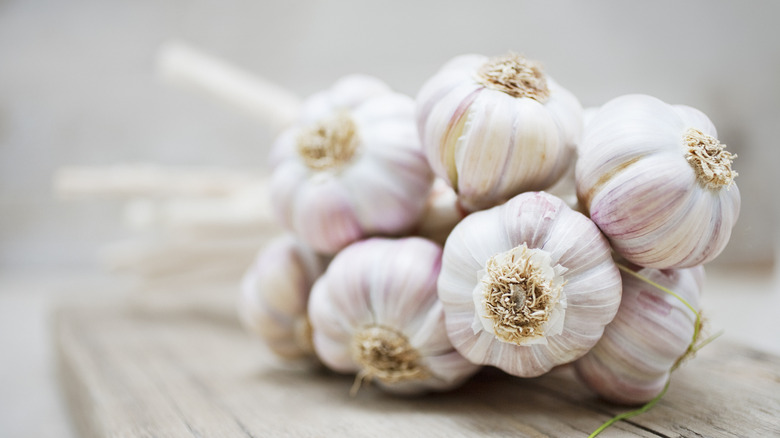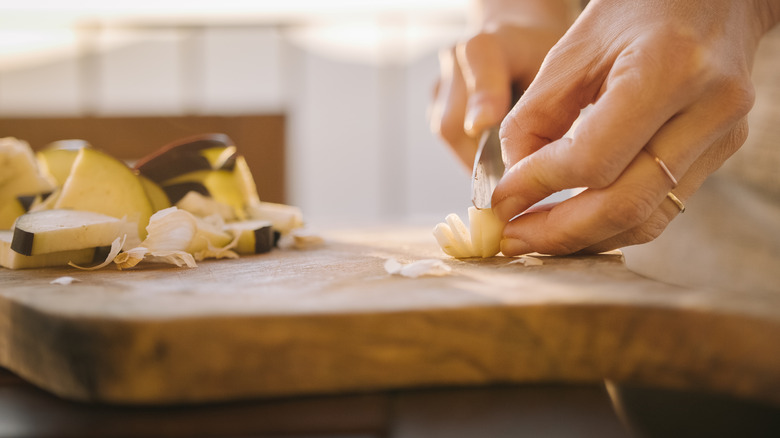Can Garlic Really Be Used As Glue In A Pinch? Here's What We Know
Garlic is a truly unique vegetable. It has so many properties that set it apart from its onion cousins and it brings so much to the table (pun intended). You can use it as a seasoning, baked, roasted, crushed, sauteed, or mushed into a paste. Garlic can help keep your immune system functioning well and can destroy some viruses.Garlic even works as a rodent repellent in your bird feeders! This small but mighty vegetable offers a seemingly endless number of perks, but there is one use that might have some people surprised. Garlic juice can also be used as glue, and if you love finding natural alternatives or just happen to run out of adhesive, it might be worth giving this trick a try.
You may have noticed when you're chopping a clove of garlic that your fingers come away sticky. This is due to the high amounts of sulfur found within the clove, and just one garlic bulb has over 30 notable sulfur compounds and 10 different sugar compounds. Allicin is a sulfur-based compound that creates the notable smell garlic is known for when the bulb's tissue is affected by outside forces, but it also produces a sticky substance. With the trace amounts of sugar inside of the bulb, this little piece of produce can get quite adhesive if used properly.
Slice and squeeze for an all-natural paste
In order to make a paste that will keep items together, you need to pull the juices from the garlic bulb by peeling off the outer skin and then using a knife to cleave the cloves in half. Once the inner part of the clove is exposed, you can use your fingers to push the juice to the surface. It's important to remember that this natural 'glue' isn't meant to hold heavy objects together, so don't try and use it to adhere to big pieces, because they might end up more broken than they started. Lightweight materials like thin glass and decorative paper materials can benefit from garlic paste, and if you're in a pinch, this is a great replacement for your staple adhesive. Use a clean, fine-tip paintbrush to add garlic juice to the cracks or tears you need to repair and hold the two segments together so they can set before letting them dry completely.
You can also rub the clove directly on the item you're trying to repair, but make sure to squeeze as much out as you can so the sticky juice is accessible. This all-natural solution to glue is easy to make, but keep in mind it comes with a very notable scent. If you don't mind the smell, you can keep this useful trick up your sleeve for all the small jobs that require a little extra stick! Grow your own garlic with a clever TikTok hack and you'll have glue on tap whenever you need it (and you can even grow garlic indoors if you like).

